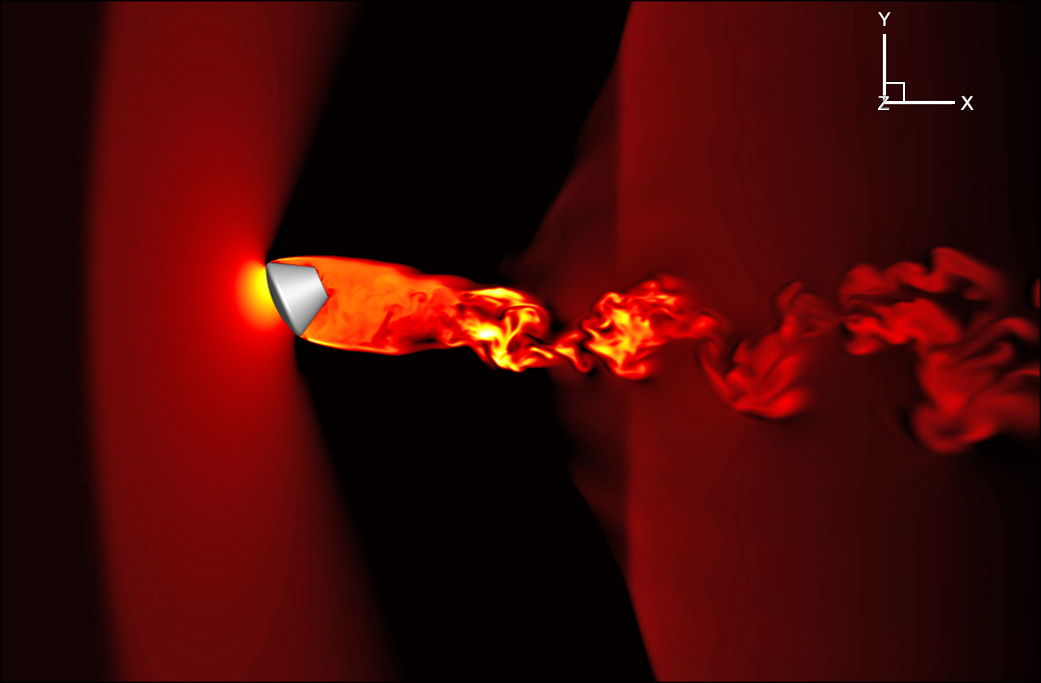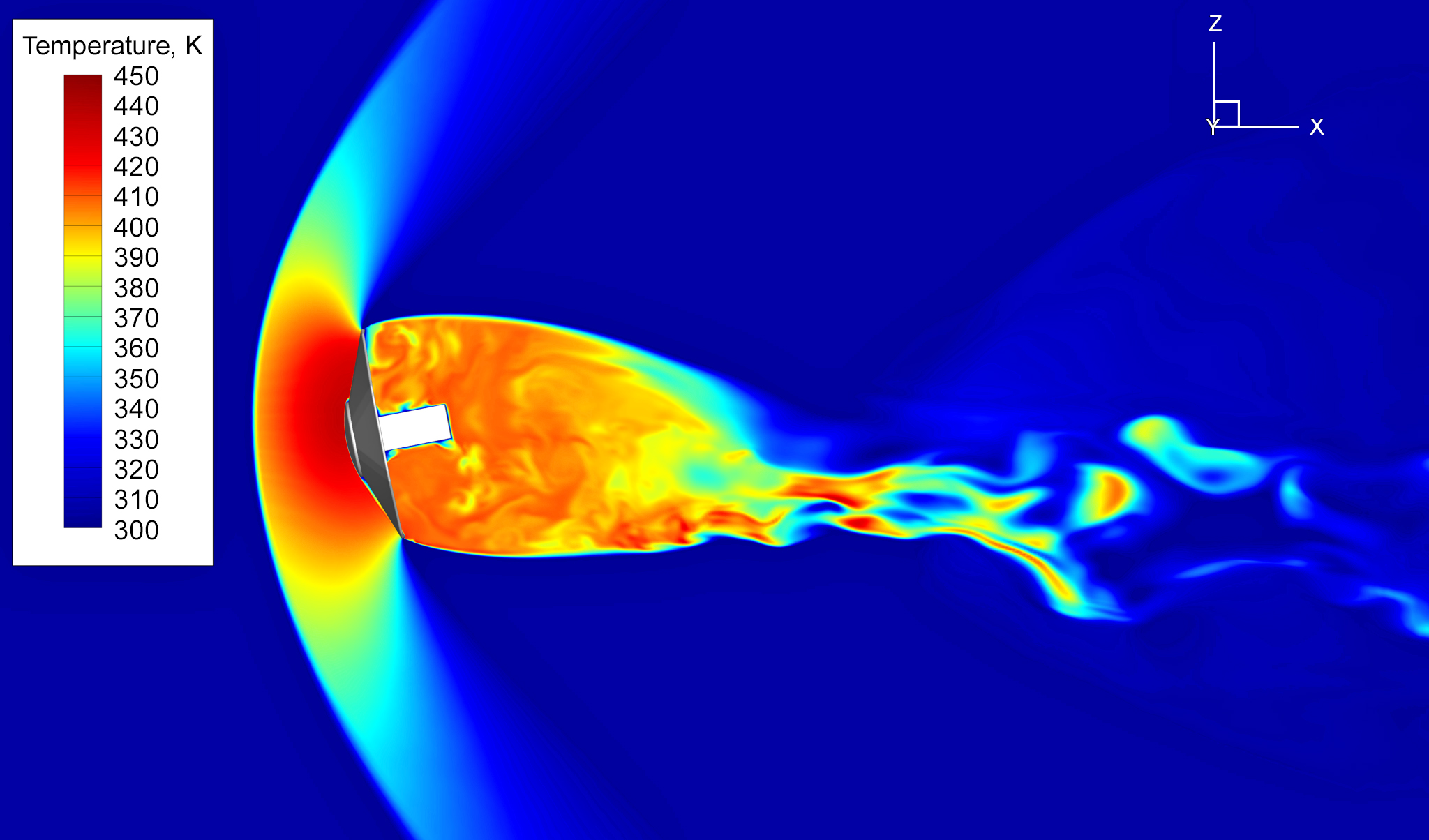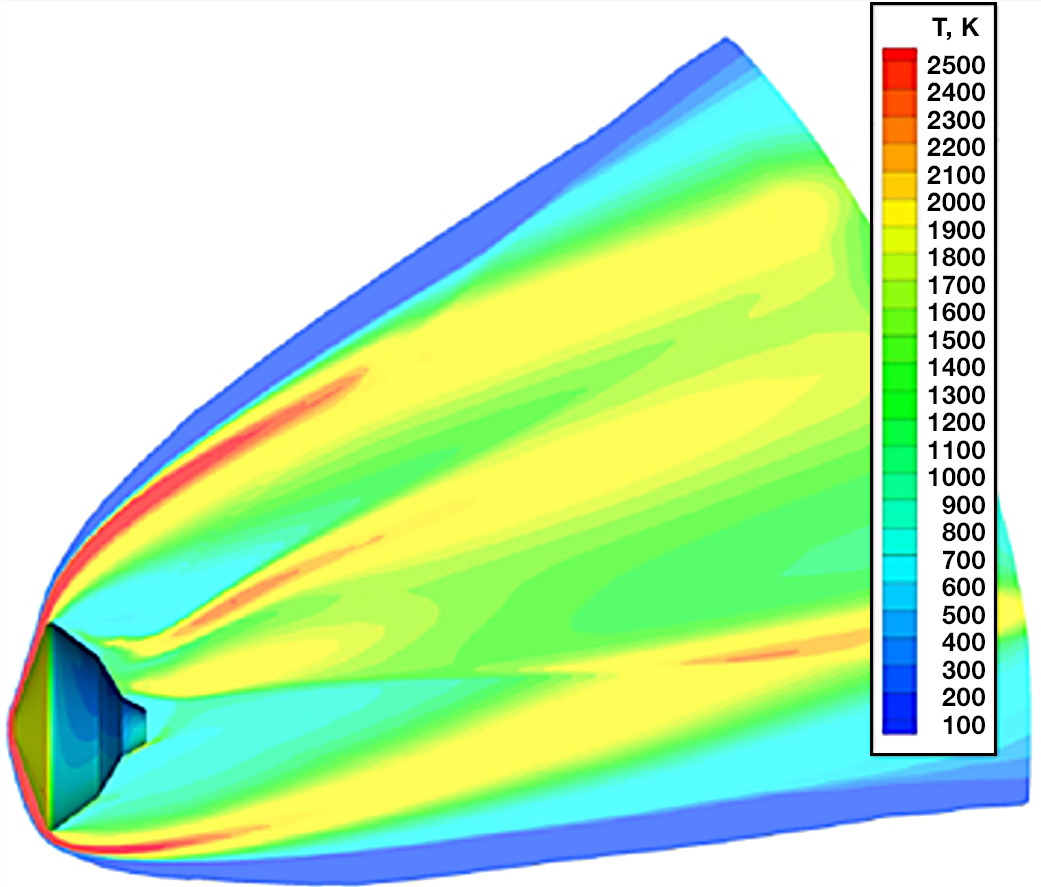What is NASA’s Entry Systems Modeling Project?
NASA’s Entry Systems Modeling project develops computer-based technologies and validation experiments that predict spacecraft performance during the extreme conditions of atmospheric entry.
When spacecraft approach a planet going tens of thousands of miles per hour, aiming to land the mission at a specific destination, it needs to quickly slow down or decelerate while going through the atmosphere. This deceleration converts kinetic energy from the atmosphere into thousands of degrees of searing heat as the spacecraft travels through the atmosphere to a planet’s surface.
These critical entry systems rely on several inter-connected technologies that include heat shields, parachutes, and guidance, navigation, and control systems, that protect crew and payloads against the extreme conditions of entry.
The entry, descent, and landing segment of an interplanetary journey is one of the riskiest parts of any landed mission. Entry systems that safeguard spacecraft during atmospheric entry rely on ground-based experiments and complex computer-based simulations because full-scale, end-to-end testing is often too expensive or impossible to conduct at Earth.
Hit the Brakes, Manage the Heat, and Arrive Safely
NASA’s Entry Systems Modeling project develops new approaches to improve predictions of the spacecraft aerothermal entry environment and to simulate the response of the thermal protection system to that environment. These predictions are made using complex software that are validated against test data. As software capabilities improve, uncertainties in simulation predictions are reduced, which translates to a risk reduction for missions, reduced entry vehicle mass, and increased landing precision. For certain classes of missions, like sample return from Mars, advanced entry system modeling software is an enabling technology.
Another critical aspect of slowing a spacecraft from hypersonic speeds is to understand how aerodynamic forces on the spacecraft can create an unsteady and dynamic environment causing vehicle oscillations. How intense will these oscillations be for the spacecraft? Predicting the dynamics is critical to understanding vehicle stability and the performance of descent sub-systems, such as parachutes or supersonic retro-propulsion. Retro-propulsion – a key design element of future high-mass explorers to Mars and other destinations – involves the use of powerful rockets to slow down a vehicle. It is therefore particularly crucial to understand the dynamics at play in order to successfully command and control the system.
Models and simulations for atmospheric entry are key technologies to ensure mission success across the Solar System. They are used to design the missions that NASA is currently flying and designing, such as Artemis, Mars 2020, Mars Sample Return, and Dragonfly. To meet the needs of such a diverse range of destinations, the Entry Systems Modeling project is focused on four cross-cutting areas of development:
-
Predictive materials modeling
The goal for this technical area is to develop and validate a high-fidelity modeling capability to better understand how heat shield materials physically and chemically deteriorate while traveling through an atmosphere. This helps to reduce uncertainty when designing thermal protection systems for future missions.
-
Aerosciences
This technical area develops and validates aerodynamic and aerothermodynamic computational tools for hypersonic entry, descent, and Aerosciences modeling impacts nearly every aspect of entry system design and encompasses some of the largest technical challenges, including vehicle dynamics, plume interactions, and parachutes.
-
Guidance, Navigation, and Control
This technical area develops robust and precise guidance, navigation, and control techniques to meet requirements of future missions, including human missions to Mars. GN&C also seeks to implement and verify end-to-end entry, descent, and landing simulations of mission flight profiles, accounting for both nominal and off-nominal performance, to ensure high probability of mission success.
-
Shock Layer Kinetics and Radiation
This technical area develops and validates models for radiative heating that is produced behind the shock wave of a spacecraft entering an atmosphere from orbital velocity. Radiative heating occurs when the gas in front of the spacecraft is so hot that it emits energy in the form of light. For the most extreme entry speeds, radiative heating is the dominant source for aeroheating. By improving accuracy of shock layer radiation models, NASA can greatly reduce mission risks of the thermal protection system.
The Entry Systems Modeling project is managed at NASA’s Ames Research Center in California’s Silicon Valley and funded by NASA’s Game Changing Development Program, part of NASA’s Space Technology Mission Directorate, in partnership with the Planetary Science Division of NASA’s Science Mission Directorate. Technical support of the project is spread across Ames Research Center, Langley Research Center, Johnson Space Center, and Glenn Research Center. ESM also has partnerships with other government agencies and many universities. The Game Changing Development program aims to advance exploratory concepts and deliver technology solutions that enable new capabilities or radically alter current approaches.
Learn more:
- NASA story: Ames Contributions to Mars 2020 Mission
For researchers:
- NASA fact sheet: Space Technology Game Changing Development Entry Systems Modeling
- NASA technical webpage: Electric Arc Shock Tube
- NASA video: NASA EDGE: Game Changing Entry, Descent and Landing Part 1
- NASA video: NASA EDGE: Game Changing Entry, Descent and Landing Part 2
For news media:
- Members of the news media interested in covering this topic should reach out to the Ames newsroom.





























